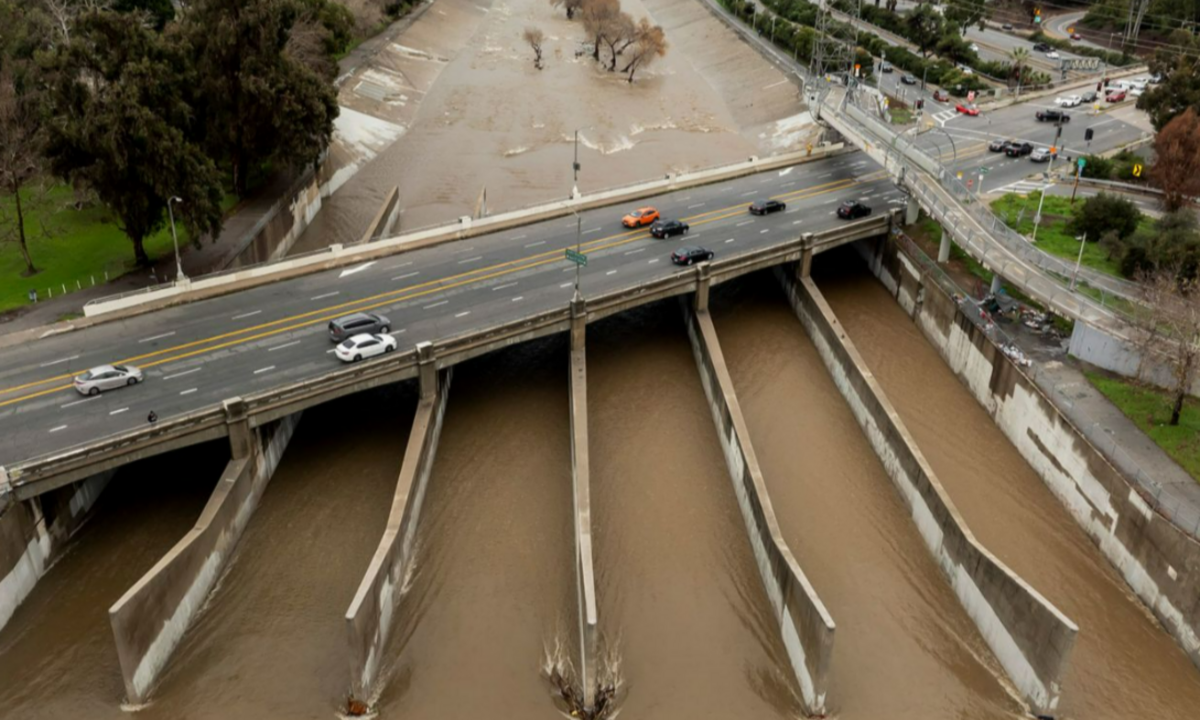Los Angeles recently witnessed a historic winter storm, bringing record-breaking rainfall that led to severe flooding, road closures, power outages, and safety concerns across the city.
The storm, which lasted several days, caused significant damage, especially in burn scar areas, where heavy rain increased the risk of mudslides and debris flows.
As emergency services worked around the clock to manage the crisis, residents were advised to stay indoors, avoid unnecessary travel, and stay alert to evacuation warnings in vulnerable areas.
Unprecedented Rainfall and Severe Flooding
The National Weather Service reported that Los Angeles received over 4 inches of rain in just 24 hours, breaking records for the wettest February day in decades. Some areas saw even higher totals, leading to widespread urban flooding and dangerous road conditions.
Key areas affected by the flooding included:
Downtown Los Angeles
The San Fernando Valley
Santa Monica and Venice Beach
Parts of Ventura and Orange Counties
In several neighborhoods, streets turned into rivers, trapping cars and making it difficult for residents to navigate their surroundings. Many businesses and homes reported water damage, while power outages affected thousands of households.
Landslides and Mudslide Concerns in Burn Scar Areas
One of the biggest concerns following the heavy rainfall was the risk of mudslides and debris flows, especially in areas recently affected by wildfires. Burn scars weaken the soil, making it easier for rain to trigger landslides, which can destroy homes, block roads, and endanger lives.
The worst-affected areas included:
Palisades and Franklin fire zones in Pacific Palisades and Malibu
Eaton fire area near Altadena
Bridge fire zone in the San Gabriel Mountains
Geologists and meteorologists warned that mudslides could travel as fast as 35 mph, carrying boulders, trees, and debris into neighborhoods. Residents in high-risk areas were advised to stay alert, follow evacuation orders, and be prepared for emergency situations.
Emergency Response and Road Closures
Authorities worked tirelessly to clear floodwaters, assist stranded drivers, and respond to emergency calls. The Los Angeles Fire Department (LAFD) and other agencies rescued people trapped in vehicles, while flood control crews rushed to unclog storm drains to prevent further water buildup.
Several major roads and highways were temporarily shut down due to flooding, including:
Interstate 5 near Burbank
Pacific Coast Highway (PCH) in Malibu
The 101 Freeway in Ventura County
Numerous surface streets across L.A. County
Transportation officials urged commuters to avoid driving through flooded roads, as just a few inches of water can cause vehicles to stall or be swept away.
Strong Winds and Power Outages
In addition to the torrential rain, the storm also brought strong winds, with gusts reaching up to 50 mph in some parts of Los Angeles County. These winds toppled trees, damaged buildings, and knocked down power lines, leaving thousands of residents without electricity.
Utility companies worked to restore power, but officials warned that some areas could experience extended outages due to damaged infrastructure and ongoing hazardous weather conditions.
Looking Ahead: What’s Next for Los Angeles?
As the storm moves out of the region, weather experts predict drier conditions for the coming weeks. However, residents are urged to remain cautious, as the aftermath of the storm could still pose safety risks, such as sinkholes, landslides, and weakened structures.
Authorities are also working on long-term solutions to prevent future flooding disasters, including:
Upgrading stormwater drainage systems
Expanding flood control measures in high-risk areas
Improving emergency response strategies
While this storm was not classified as catastrophic, it served as a reminder of how vulnerable Los Angeles can be to extreme weather. Experts believe that climate change is contributing to more intense storms, making preparedness efforts even more important for the city.
Disclaimer—Our team has checked this article to ensure its accuracy and eliminate any misinformation. We are committed to providing clear and reliable information for our readers.


